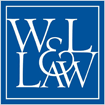Stealth Constitutional Change and the Geography of Law
Posted with permission from the copyright owner.
Abstract
Bruce Ackerman’s recent book, The Decline and Fall of the American Republic, is a sudden shift from his previous scholarship on constitutional moments and the ability of social movements to generate minor revolu-tions. By acknowledging how constitutional change did not fit into his model of deliberate, deeply debated movements, Ackerman has shifted the scholarly lens to unintentional and unanticipated structural variations. Ackerman focuses his book on the political processes and events that have fostered potentially illegitimate constitutional remodeling. He acknowledg-es that certain features of legal scholarship have contributed to a lack of awareness of slow, structural drift, but he does not address the question in earnest, as I do in this Essay.
My intention is not only to explain how features of legal scholarship have failed to make us aware of structural constitutional drift but also to use the Essay as an object lesson to prove the possibility of interesting, original, and readable scholarship on slow, structural change. To accom-plish this task, I use original research from the Lyndon B. Johnson Presi-dential Archives to tell a story of stealth change in our constitutional structures when the Appalachian Regional Commission was established.

